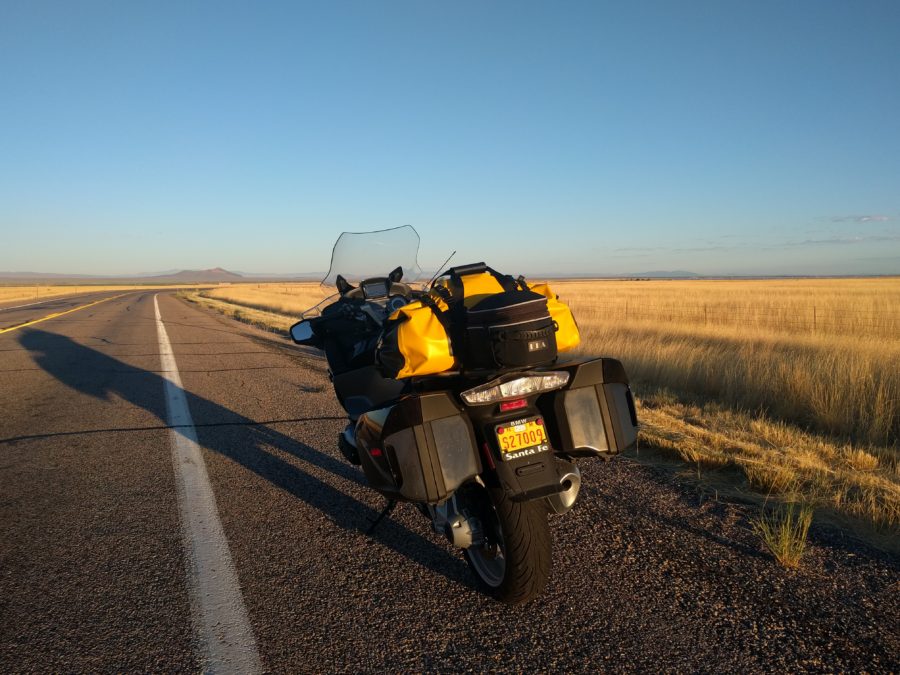
At the beginning, I had to ride alone.
In my mid-forties and under the spell of a quixotic impulse, I bought a new red 1991 BMW K75S. But I was unprepared to ride. I couldn’t test ride the Beemer or ride it home, because I didn’t have a motorcycle license. Besides, I hadn’t put my leg over any motorcycle for a quarter of a century, since I swapped a Yamaha Trail 80 for a used VW bug. I was nervous about whether I could even handle my new moto. Just getting a 500-pound bike on or off the center stand was a challenge.
I resided in rural upstate New York and couldn’t look to others for help. I had no friends who were active motorcyclists. On my first ride down a nearby rural road, despite going slowly, I crashed within two miles. My lack of motorcycling skills was unmistakably confirmed. The K75 and I suffered cracks, scrapes and bruises, although fortunately no major damage. But the wounds to my confidence and psyche were much deeper and longer-lasting.
My fantasies about traversing New England that summer were replaced with anxieties about developing elementary motorcycling skills. It was late winter and there were no nearby motorcycle training opportunities. I had to ride alone…and learn alone.
Some weeks after my crash, I mustered up courage and resumed short forays on empty country roads, getting comfortable with the mechanics of riding— accelerating, shifting, braking, going around turns, stopping and starting smoothly. The K75 was top-heavy and I strained to lift it off the ground when I dropped it while making a U turn. That sort of mistake is best done without witnesses, if you are able to pick up the bike.
Skilled riders have to control their speed to remain within the speed limit on many roads, while I was trying my best to avoid being mistaken for a stationary object in the highway! My rides were so cautious that getting up to the speed limit was beyond my ability. The idea of traveling briskly and leaning the bike through turns was something that I hoped to master in the distant future.
Most proficient riders, I believe, do not seek the company of a frightened trainee like me. I imagined that chaperoning a newbie would remove the joy of a brisk ride, requiring other riders to stop and wait frequently. I didn’t want to be a burden or to endure the embarrassment of being an incompetent rider. On my own, I slowly gained elementary skills and my anxieties gradually subsided. I began to sense the joys of riding, although my trepidation still outweighed the pleasure by about 10 to 1. My ambition was to reverse those proportions.
Traveling on familiar roads evolved into longer rides on unfamiliar routes throughout the Berkshire Mountains. Although I still harbored fears, I glimpsed the exhilarating experience that accompanies motorcycling. There was the sensation of being alone, embracing the countryside, which provided a moving landscape of experiences: the changing air temperatures from valleys to mountain passes; the aromas of the forests and farm land; and the accompanying rumble of the engine, the comforting encasement of my new black leather gear and air swooshing around my helmet. What had been so overwhelming to me as a novice slowly morphed into a sense of confidence and a surprising feeling of freedom about where to go and what to do with only a map, a credit card, and a few gallons of gas.
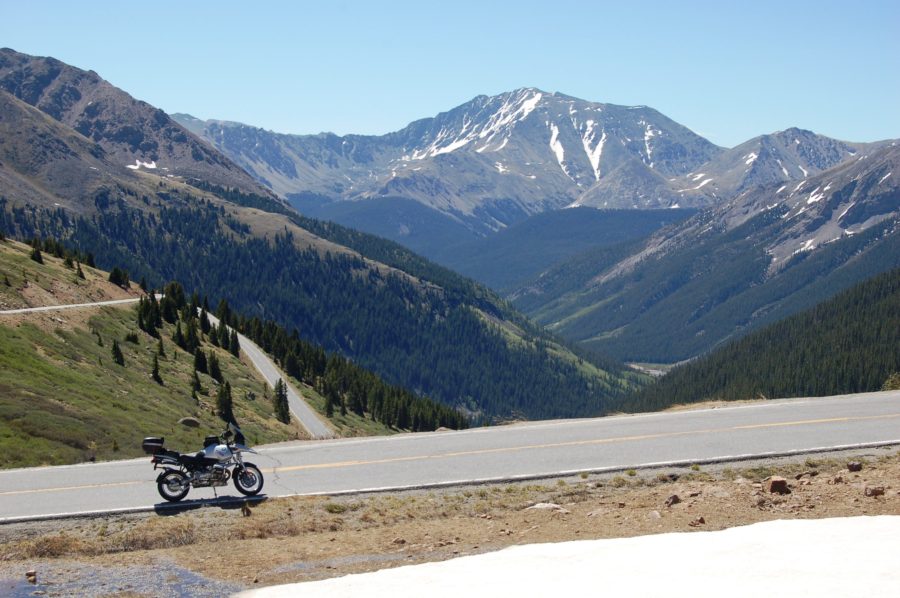
Within my first year, I ventured beyond my local training roads and expanded my solo rides throughout New England to the coast of Maine and a later trip down the Blue Ridge Parkway. While I noted my growing eagerness to ride often and for greater distances, my non-motorcycling friends thought me insane. As my skills and confidence improved, I began to think that I may no longer be a burdensome riding companion.
This speculation coincided with an unanticipated career move to Los Angeles. By coincidence, my wife and I found housing near the famous motorcycling café, the Rock Store, nestled among the twisty canyon roads of the Santa Monica Mountains. I had suddenly traded the rural tranquility of solo riding in New England for the high energy, canyon carving sport bike circus of Southern California. It was an entirely new moto world to me.
Riding alone became nearly impossible. For instance, my daily moto commute to work involved lane splitting on gridlocked freeways. This kind of riding is in stark contrast to the tranquility of riding alone; instead, it’s like a quarterback sneaking through a horde of gargantuan lineman intent on crushing him. Even on weekend rides the canyons were alive with hundreds of motorcyclists, from novices like me to those who had honed their skills on race tracks. Riding alone for me now meant compulsively watching my mirrors for the next pod of racer boys, exhibiting a level of skill that I had never seen while whizzing past me.
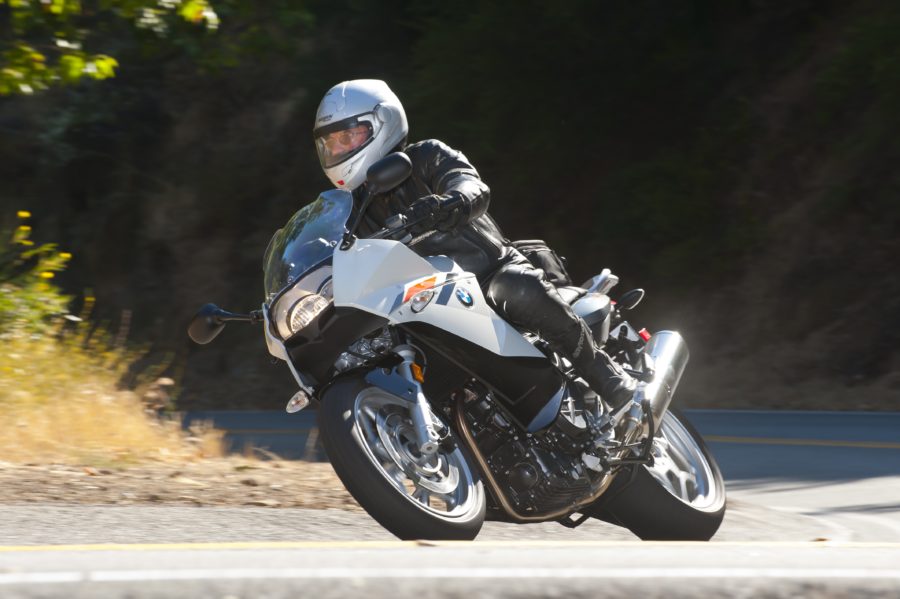
Fortunately, I quickly found a group of middle-age motorcyclists who were willing to shepherd me into this different style of riding. And, for the next 18 years, my weekend ventures were with this group, learning from them, improving my skills, enjoying companionship, discovering relatively less traveled roads, and sharing the joys of motorcycling. Particularly memorable was the thrill of being part of a small group scooting up and down canyon roads at a brisk pace, using the same braking points and lines through corners, spacing ourselves safely apart, but moving as if linked tightly together in a choreographed performance. Over thousands of miles, I was a regular within one of those swift pods routinely passing others and nimbly getting around and through traffic. But even with the benefits of a group, I still coveted my humbling early solo excursions and occasionally preferred to travel alone. Over the ensuing years, I travelled solo throughout the West Coast, Southwest, and Rocky Mountain states.
There are benefits to riding alone. Trip planning need not be negotiated with others. In fact, planning may take little more than heading out of town on one of my favorite roads, without knowing exactly what my route or destination will be for the day. I may choose a familiar route or spontaneously turn onto an unfamiliar but intriguing county road, without the need to consult a map. How adventurous do I want to be, how long do I want to ride, and where will I find a motel and decent place to eat at the end of the day?
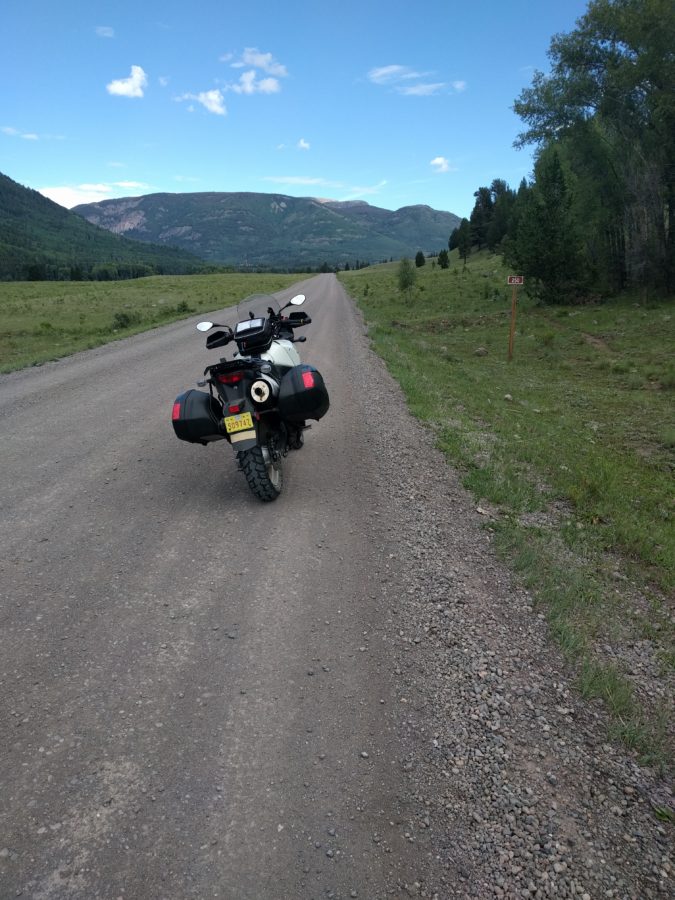
Riding alone means all decisions are my own, for better or worse. When and where to take a bathroom break, have a coffee or snack, take some photos, or get gasoline. The pace of travel fluctuates with my mood and energy, and my assessment of riding conditions–the likelihood of icy roads, the risk of wildlife unexpectedly strafing the pavement, the implications of a darkening sky, or whether the recent rains may have flooded the roads that dip down through the arroyos. When fatigue sets in, I make the call about whether to end the day’s ride at the next motel or campsite. None of these decisions are particularly difficult, and making them alone, rather than through a roadside committee, makes the trip less complicated and comes with the quiet satisfaction that the ride is entirely my own.
I admit that there are moments of fear while riding alone. Since I prefer secondary roads and sparsely inhabited regions that often are without cell phone service, I recognize that isolation has its risks. Mechanical failures, collisions with animals, a dropped bike, a skirmish with gravel, or running wide on a decreasing radius turn, all can become more threatening.
I look beyond the risks to the quiet pleasures of solitude. There is a paradox of being in nature while riding a motorcycle. I’m gliding through a verdant meadow, a stone walled canyon, an evergreen forest, or arid plain, environments that exhibit hardly a trace of human tinkering, beyond the pavement. It is awe-inspiring to be alone in a place where the landscape has been relatively unchanged for tens of thousands of years. It is the wilderness that draws people to hike the Pacific Coast Trail or canoe down an isolated river alone. But I am very aware of the incongruence of being astride an ingeniously designed ultra-modern motorcycle controlled by electronic wizardry that didn’t exist two decades ago. Whether hiking or riding, I am immersed in nature while moving through it, being relatively isolated, and largely self-reliant–no man-made intrusions, with the exception of my conversations with myself, hour after hour. As the writer Edward Abbey (Desert Solitaire, 1968) said, “I am twenty miles or more from the nearest fellow human, but instead of loneliness I feel loveliness. Loveliness and a quiet exultation.”
So, in the end, I come full circle and sometimes ride alone.
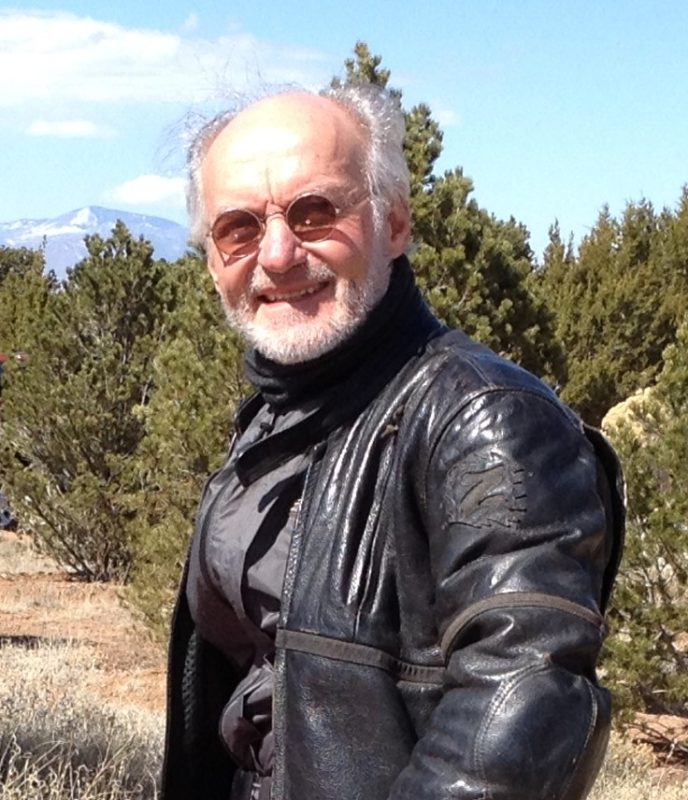
About the Author:
After abandoning motorcycling for decades, Stuart A Kirk resumed riding in 1991 with a passion, covering over 600,000 miles. As he describes in his recent book, Revved! Obsessions of a Midlife Motorcyclist (available from Amazon and Aerostich), his return was not without trauma. Now a retired professor, he has plenty of time to ride. He lives in Santa Fe, New Mexico, amidst a sprawling web of extraordinary mountain and canyon roads.
